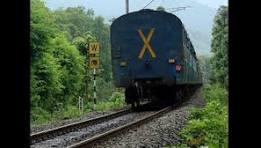
Points: 1. Controversies in India
2. Meaning and concept
3. Why the concept has become significant?
4. Balance between development and exploitation.
5. Measures suggested.
Controversy has surrounded many major developmental and infrastructure projects in India. For example, the Sardar Sarovar dam on the river Narmada, the Chilka Lake in Orissa, the Konkan Railways, the East Coast Road etc.
Objections to these projects pertain to the extent of environmental destruction and uprooting of human settlements such projects may cause. But these environmental and social costs have been justified by the Government and other protagonists as essential for any kind of development. This dichotomy reflects the essence of the debate around sustainable development. The process of resolving the perceived conflict between environment and development in all these issues and the actual solutions that are worked out, will indicate whether the concept of sustainable development is implementable in a country like India.
Not only in India but almost everywhere in the world, “sustainable development” has become the new buzz-word. Every international agency – from the World Bank to the UNICEF – and almost every country is discussing it. But what does this sustainable development mean?
“Sustainable development is development that meets the needs of the present without compromising the ability of the future generations to meet their own needs.” This definition has been offered by the World Commission on Environment and Development (WECD) in its report “Our Common Future” (1987) and widely accepted. Economists define it as an economic progress in which the quantity and quality of our stocks of natural resources (like forests) and the integrity of bio-geo-chemical cycles (like climate) are sustained and passed on, unimpaired, to future generations.
In its modern form, “sustainable development” was born and developed in the World Conservation Strategy produced jointly in 1980 by the IUCN, WWF and UNEP. It aimed “to help advance the achievement of sustainable development through the conservation of living resources.” It declared that “conservation, like development, is for the people.” That is the way all future development was to take place and be judged.
The concept assumed immense importance against the backdrop of the growth of human population and modern man’s indiscriminate and unbridled exploitation of environment to gratify his ever-growing hunger for prosperity. The two factors may soon exhaust the environmental resources and the planet will then not help in the survival of even human beings. People and planners must accept that there is a finite amount of habitable land and water on this earth. A specific concern is that those who enjoy the fruits of economic development today may be making future generations worse off by over-exploitation of the natural resources and polluting the earth’s environment.
Adding to the problems caused by population growth is the economic explosion. During the 20th century, world economy has expanded twenty times and industrialisation has increased by a factor of five since 1950. This boom has depleted stocks of ecological capital (fuel, forests, soil, species, fish, water etc.) faster than such stocks can be replenished. Our own success thus threatens to become our undoing.
Environmental degradation has already been massive. Yet not many seem to be aware of it. The natural resources are being exploited without much consideration for the future generations. Because of the holes in the ozone shield and the accumulation of greenhouse gases, the world may already be on a critical threshold. Indications of ecological degradation only reveal that economic growth of the present kind is not sustainable. Thus, human survival and development today, more than ever, depend on two critical factors – a check on the population and a successful “management” of the world’s natural resources.
The process of economic transformation in recent years involved a rapid increase in the scale of human pressure on the environment and also radical structural transformation, particularly in terms of urbanisation and industrialisation. Threats to the environment can be linked directly with these rapid changes in several different ways. For example, as population expands, people move into “un-occupied” areas, involving destruction of various species of flora and fauna. Quite a different form of environmental degradation results from effluents, smoke and other waste produced by industrial operations. The crowding of people in urban areas requires sanitary, transport and housing arrangements which are more complex and often more costly than those in the countryside, and all are accompanied by varying degrees of pollution.
Each society experiments and learns from its own mistakes. Sustainable development cannot be thrust upon anyone by an external agent, simply because it believes that it has learnt all the lessons there are to learn. That will be a process towards unsustainable development.
Strong public institutions and environmental protection policies are essential. Policy reforms must focus on changing agricultural and industrial practices so as to reduce drastically the amount of pollution, wastes and other environmental damage per unit of output.
People have always used the earth’s resources and it is unreasonable now, with exploding populations, to expect them to stop. The solution to the human thrust on nature is not in stopping use of natural resources but in using them wisely. The motto must be, “You must give back to the earth what you take from it.” Man will have to shake off his predatory habit of viewing all natural products as his belongings and allowing his greed to harm other species and ecosystems.
Accepting the challenge to accelerate development in an environmentally responsible manner will involve substantial shifts in policies and priorities and will be costly. Failing to accept it will be costlier still. The challenge becomes clear when we realise that we are part of nature. *ZZZ*
